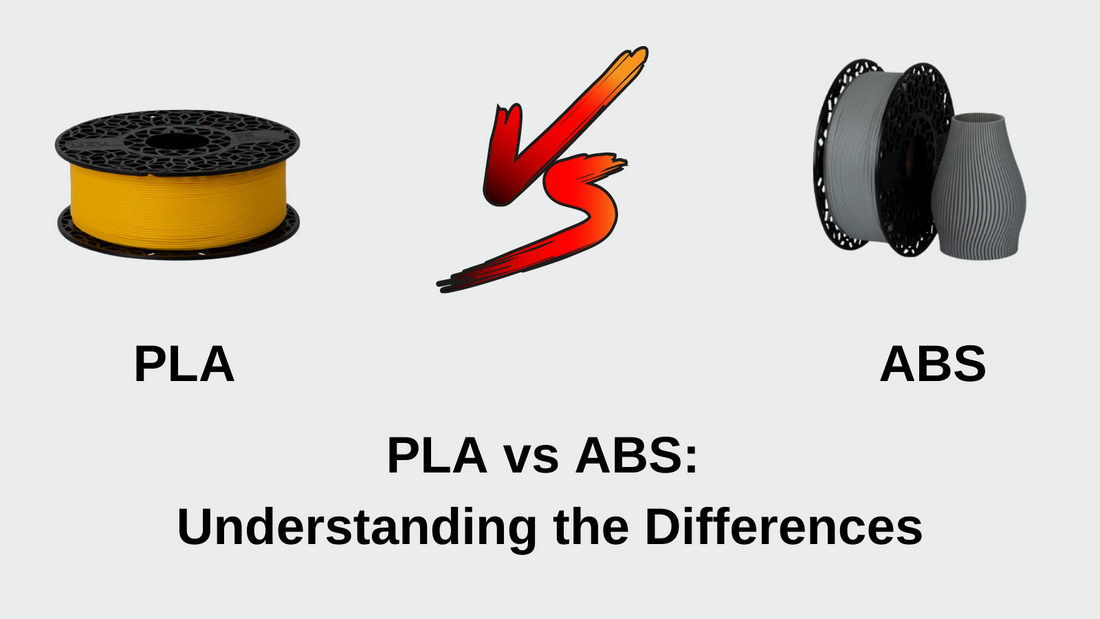PLA vs ABS: Understanding the Differences
If you're new to 3D printing, you may have heard of two popular materials called PLA and ABS. But what's the difference between them, and how do you know which one to choose for your project? In this blog post, we'll explore the key differences between PLA and ABS and help you decide which one is right for you.
What is PLA?
PLA, or Polylactic Acid, is a biodegradable plastic made from renewable resources such as corn starch or sugarcane. It is a popular choice for 3D printing due to its ease of use and good mechanical properties. PLA is also known for its low shrinkage rate, which means that it maintains its shape and size well after it has been printed.
What is ABS?
ABS, or Acrylonitrile Butadiene Styrene, is a petroleum-based plastic that is known for its toughness and flexibility. It is often used in the manufacturing of products such as car bumpers and LEGO bricks. ABS is more challenging to 3D print with compared to PLA, as it requires a heated bed and enclosure to prevent warping and improve adhesion. However, the finished prints are generally stronger and more durable than those made with PLA.
Pros and Cons of PLA and ABS
Both PLA and ABS have their own set of pros and cons, and the right material for your project will depend on your needs and preferences. Here are some key points to consider:
- PLA:
- Pros:
- Eco-friendly
- Easy to print with
- Low shrinkage rate
- Good mechanical properties
- Cons:
- Not as strong or durable as ABS
- Not suitable for high-temperature applications
- Pros:
- ABS:
- Pros:
- Tough and flexible
- Good for high-temperature applications
- Cons:
- Not eco-friendly
- Difficult to print with
Conclusion
- Pros:
PLA is a user-friendly thermoplastic with higher strength and stiffness than both ABS and nylon. With its low melting temperature and minimal warping, PLA is one of the easiest materials to successfully 3D print. Unfortunately, its low melting point also causes it to lose almost all of its hardness and strength at temperatures above 50 degrees Celsius. In addition, PLA is brittle, which causes parts to have poor durability and impact resistance.
While ABS is weaker and less rigid than PLA, it is a harder, lighter filament better suited for some applications beyond purely hobby use. ABS is slightly more durable, about 25% lighter and has four times the impact resistance. ABS requires more effort to print than PLA because it is more heat resistant and prone to warping. This requires a heated bed and an extruder that is 40-50 degrees Celsius warmer. While ABS is by no means a heat resistant plastic, it has a superior heat deflection temperature compared to PLA and nylon.
The improved durability over PLA lends ABS to some more practical applications such as prototyping and low-stress end-use parts.
In conclusion, PLA and ABS are two popular materials for 3D printing, each with their own advantages and disadvantages. PLA is environmentally friendly and easy to print, but may not be as strong or durable as ABS. ABS is tough and flexible, but harder to print and not environmentally friendly. Ultimately, the right material for your project will depend on your specific needs and preferences. It can be helpful to try both materials and see which one works best for your project.

